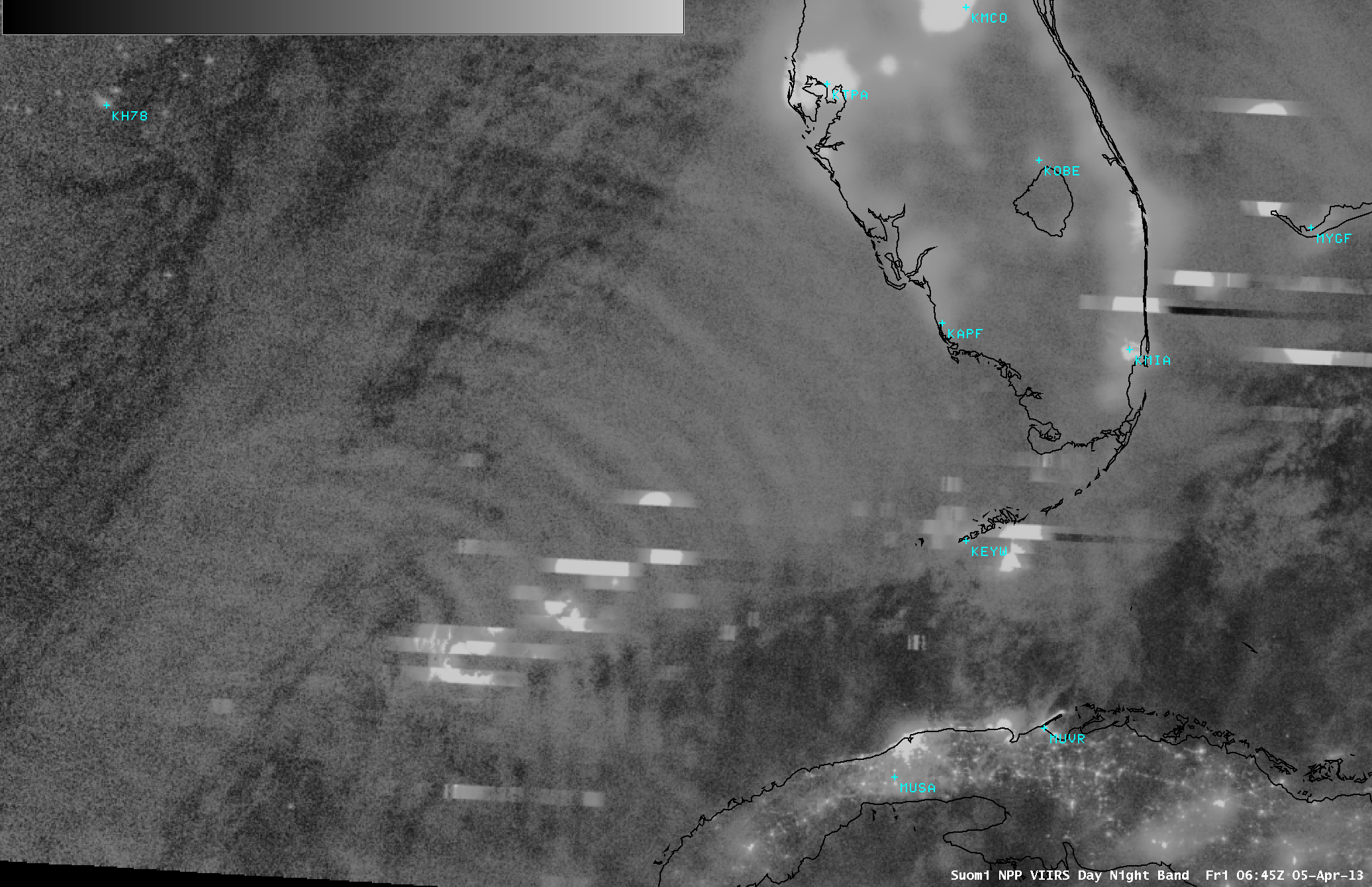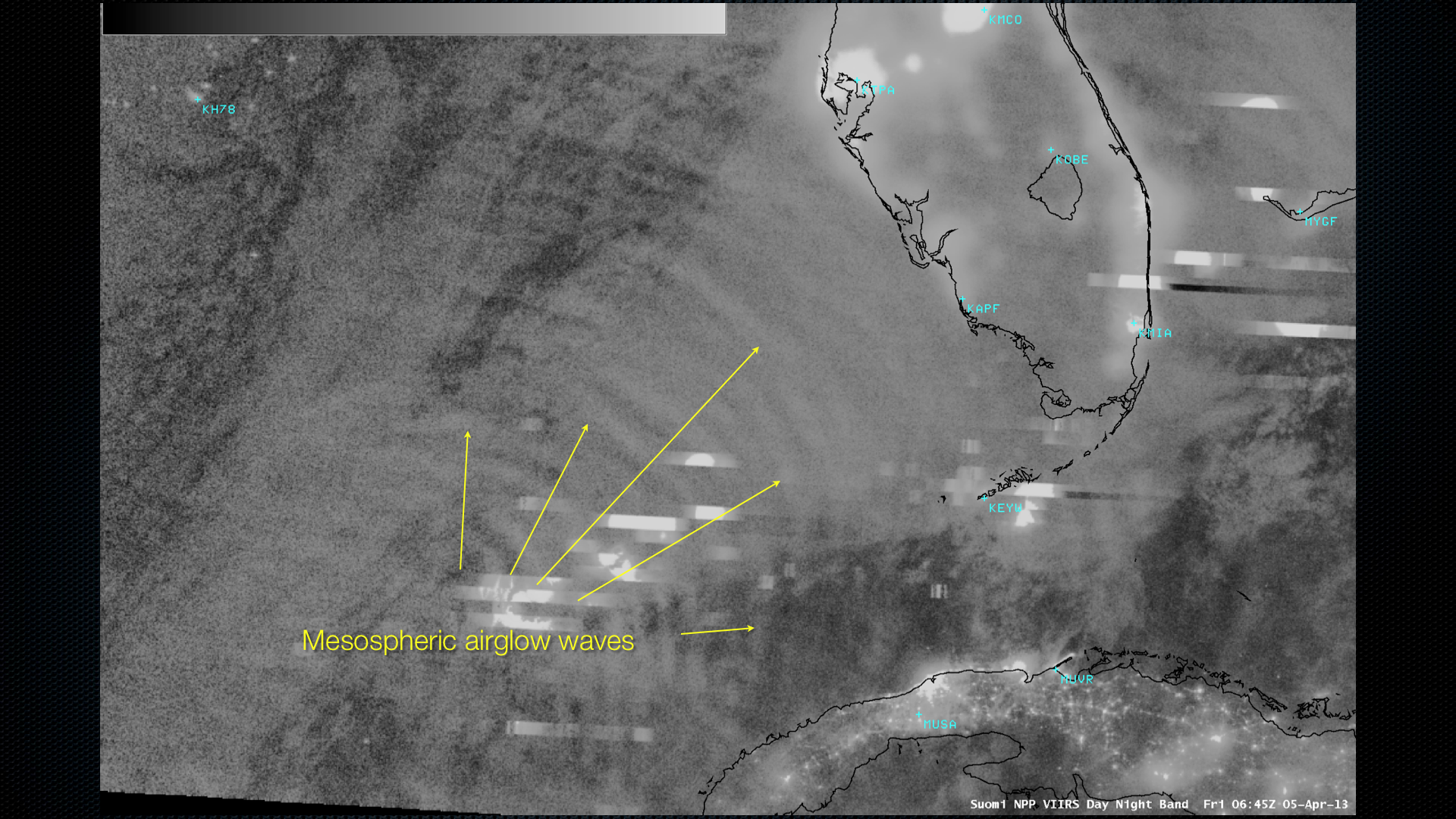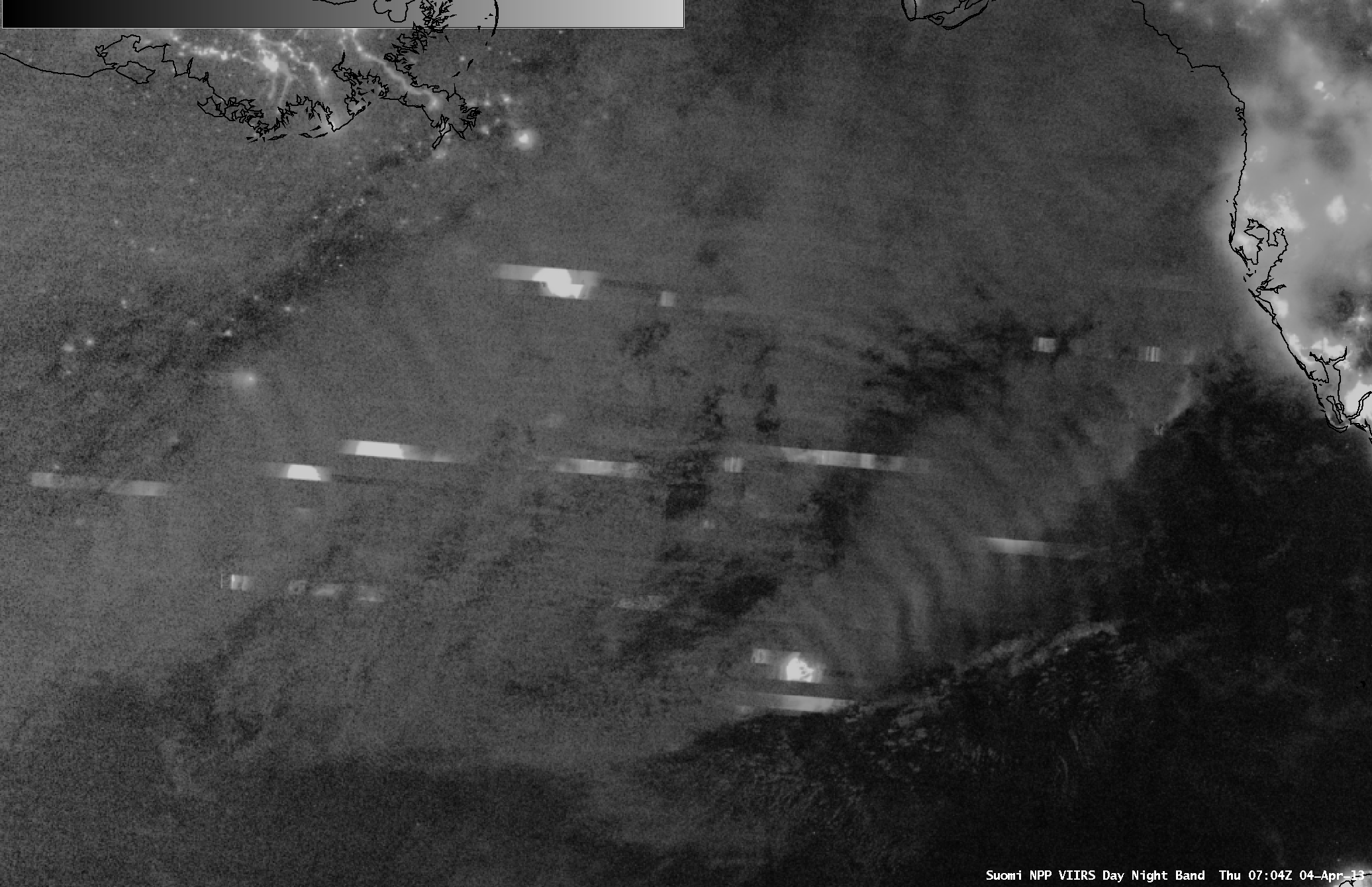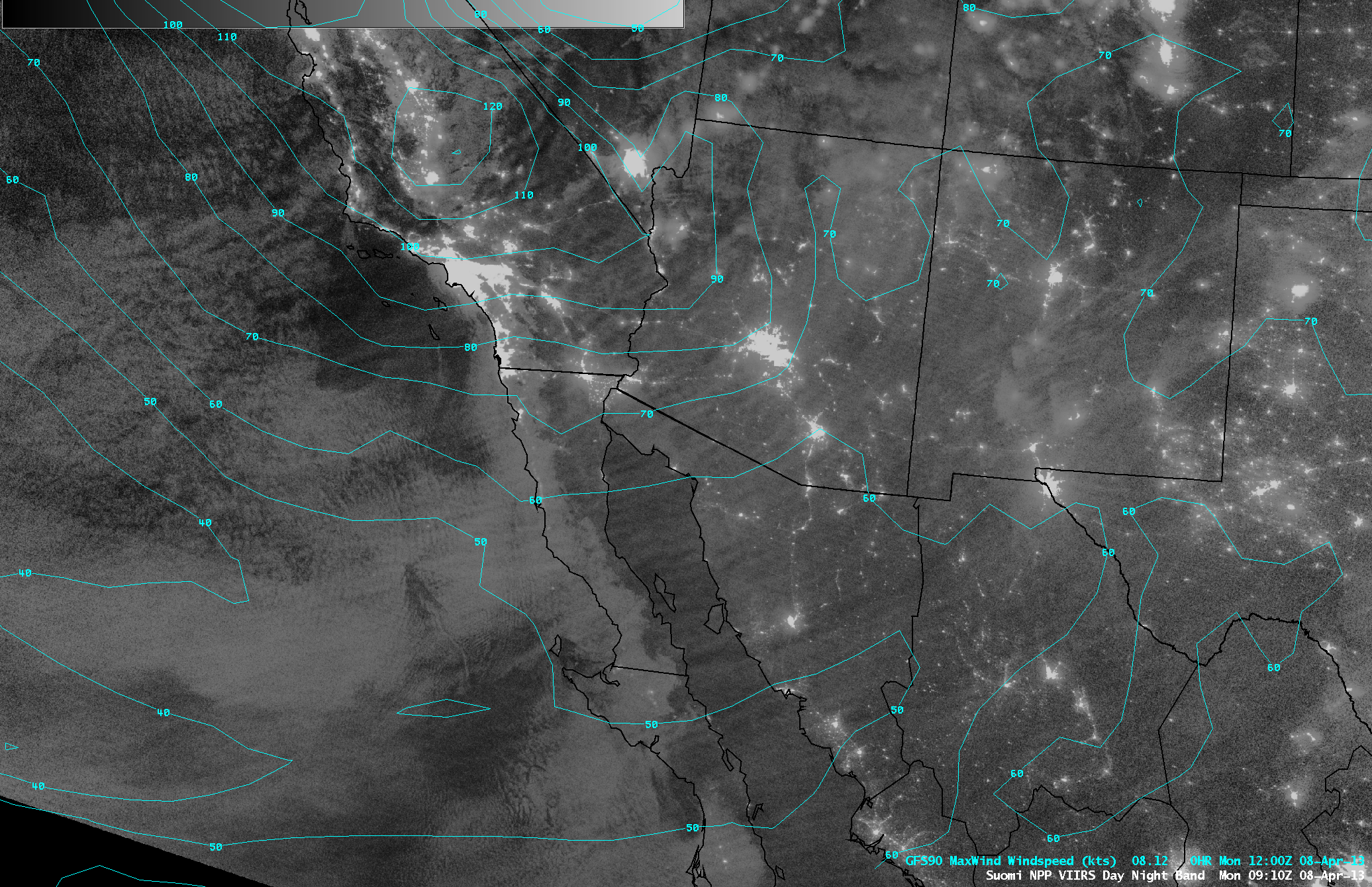Mesospheric airglow waves
Continuing on the theme of the previous blog post, AWIPS images of Suomi NPP VIIRS Day/Night Band (0.7 µm) and Infrared Window (11.45 µm) data (above) showed another large mesoscale convective system over the eastern Gulf of Mexico at 06:45 UTC or 4:45 AM local time (06 UTC surface analysis) on 05 April 2013. The Day/Night Band revealed numerous bright streaks denoting cloud tops illuminated by lightning activity — and the coldest cloud-top infrared brightness temperature was -89C (darker violet color enhancement).Overlays of conventional lightning data (below) showed that there were 1493 negative and 180 positive cloud-to-ground strikes detected within a 15-minute period across that region.

Suomi NPP VIIRS Day/Night Band (0.7 µm) image with overlays of positive and negative cloud-to-ground lightning strikes [click to enlarge]

Suomi NPP VIIRS Day/Night Band (0.7 µm) image (highlighting the appearance of mesospheric airglow waves) [click to enlarge]
===== 08 April Update =====
A few days later, yet another example of mesospheric airglow waves was seen in Day/Night Band imagery — but in this case, the waves were forced not by deep tropospheric convection, but by the interaction of strong winds with the rugged topography of the Southwest US. The flow throughout the depth of the troposphere was quite strong as a 120-knot jet upper-tropospheric jet streak was moving southward along the west side of a trough that was deepening over the western US on 08 April 2013. A series of mesospheric airglow waves could be seen traveling southeastward across the Gulf of California and adjacent portions of Baja California and Mexico at 09:10 UTC or 2:10 AM local time (below). Again, note that there was no wave signature apparent on the corresponding VIIRS Infrared Window image.
During the subsequent daytime hours, GOES-15 (GOES-West) and GOES-13 (GOES-East) Water Vapor (6.5 µm) images (below) revealed a complex pattern of mountain waves across the region — surface wind gusts were as high as 88 mph in California, 70 mph in Nevada, and 63 mph in Arizona.



